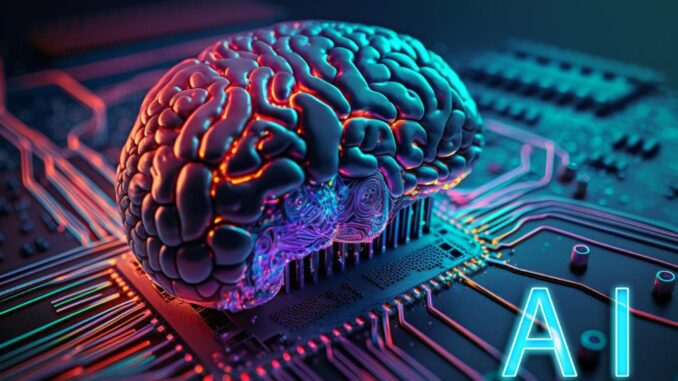
Open-source frameworks and libraries play a crucial role in the development and implementation of artificial intelligence (AI) and machine learning (ML) applications.
They provide reusable code, tools, and models that facilitate experimentation and innovation. Here’s a list of some of the most popular open-source frameworks and libraries, organized by their primary focus areas:








### 1. **General Machine Learning Libraries**
– **Scikit-learn**: A versatile library for traditional machine learning that provides simple and efficient tools for data mining and data analysis. It includes a wide range of algorithms for classification, regression, clustering, and dimensionality reduction.
– GitHub: [Scikit-learn](https://github.com/scikit-learn/scikit-learn)
– **XGBoost**: An optimized gradient boosting library designed for performance and speed. It’s widely used for structured data and has become a favorite in data science competitions.
– GitHub: [XGBoost](https://github.com/dmlc/xgboost)
– **LightGBM**: A lightweight gradient boosting framework that uses tree-based learning algorithms. It is designed for distributed and efficient training.
– GitHub: [LightGBM](https://github.com/microsoft/LightGBM)
### 2. **Deep Learning Frameworks**
– **TensorFlow**: An open-source framework developed by Google for building machine learning and deep learning models. It supports a wide range of tasks and has a strong community and ecosystem.
– GitHub: [TensorFlow](https://github.com/tensorflow/tensorflow)
– **PyTorch**: Developed by Facebook, PyTorch provides a dynamic computational graph and is popular for its ease of use and flexibility, especially in research settings.
– GitHub: [PyTorch](https://github.com/pytorch/pytorch)
– **Keras**: A high-level neural networks API that runs on top of TensorFlow, making it simpler to build and train deep learning models.
– GitHub: [Keras](https://github.com/keras-team/keras)
– **MXNet**: A flexible and efficient deep learning framework supported by Apache. It’s known for its scalability and performance across multiple GPUs.
– GitHub: [MXNet](https://github.com/apache/incubator-mxnet)
### 3. **Natural Language Processing (NLP)**
– **spaCy**: An open-source NLP library designed for performance, it provides fast and efficient processing of text data, including named entity recognition, part-of-speech tagging, and dependency parsing.
– GitHub: [spaCy](https://github.com/explosion/spaCy)
– **NLTK (Natural Language Toolkit)**: A comprehensive library for NLP that includes various tools for text preprocessing, linguistic data structures, and educational resources.
– GitHub: [NLTK](https://github.com/nltk/nltk)
– **Transformers by Hugging Face**: A library that provides pre-trained models for various NLP tasks like translation, summarization, and text generation, leveraging state-of-the-art architectures like BERT and GPT.
– GitHub: [Transformers](https://github.com/huggingface/transformers)
– **Gensim**: A library for topic modeling and document similarity that specializes in handling large text collections using unsupervised machine learning techniques.
– GitHub: [Gensim](https://github.com/RaRe-Technologies/gensim)
### 4. **Computer Vision**
– **OpenCV**: A widely-used library for computer vision and image processing. It provides functions for image manipulation, face detection, object detection, and real-time video processing.
– GitHub: [OpenCV](https://github.com/opencv/opencv)
– **Detectron2**: Developed by Facebook AI Research, this is a modular and powerful library for object detection and segmentation. It supports various advanced models and architectures.
– GitHub: [Detectron2](https://github.com/facebookresearch/detectron2)
– **KerasCV**: A collection of Keras components for computer vision tasks, providing ready-to-use models and layers for tasks like image classification, object detection, and segmentation.
– GitHub: [KerasCV](https://github.com/keras-team/keras-cv)
### 5. **Reinforcement Learning**
– **DeepAI Gym**: A toolkit for developing and comparing reinforcement learning algorithms. It provides a range of environments that allow you to develop and train RL models easily.
– GitHub: [OpenAI Gym](https://github.com/openai/gym)
– **Ray RLlib**: A library for reinforcement learning built on top of Ray, providing high scalability and an easy-to-use interface. It supports various algorithms and frameworks.
– GitHub: [Ray](https://github.com/ray-project/ray)
### 6. **Graph-Based AI and Neural Networks**
– **DGL (Deep Graph Library)**: A framework for deep learning on graph data, supporting various graph neural networks and providing APIs for major deep learning backends.
– GitHub: [DGL](https://github.com/dmlc/dgl)
– **PyTorch Geometric**: A geometric deep learning extension library for PyTorch, focused on graph representation learning.
– GitHub: [PyTorch Geometric](https://github.com/rusty1s/pytorch_geometric)
### 7. **Miscellaneous Libraries**
– **fastai**: A deep learning library based on PyTorch that simplifies training neural networks and provides high-level components to build models quickly and efficiently.
– GitHub: [fastai](https://github.com/fastai/fastai)
– **TPOT**: A library for automated machine learning that optimizes machine learning pipelines using genetic programming.
– GitHub: [TPOT](https://github.com/EpistasisLab/tpot)
### Summary
These open-source frameworks and libraries are fundamental resources for developers, researchers, and data scientists working in AI. They facilitate the creation of various applications, provide robust tools for experimentation, and offer an extensive community for support and collaboration. Depending on your project requirements and interests, you can choose the suitable library or framework to help you achieve your AI goals.


Leave a Reply